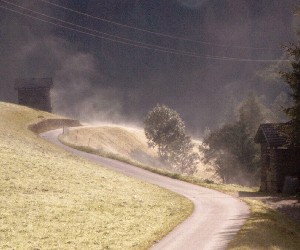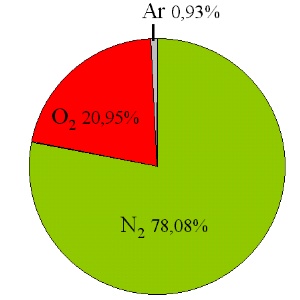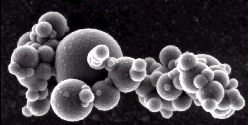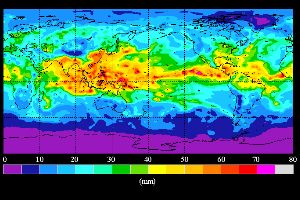 > English > Climate Encyclopaedia > Lower Atmosphere > basics > 1. Extension and composition > - components
> English > Climate Encyclopaedia > Lower Atmosphere > basics > 1. Extension and composition > - components
|
Lower AtmosphereBasics |
What does tropospheric air consist of?Tropospheric air is a mixture of a few dominant gases and many many trace gases, some of which are rather important for our climate.
|
|
The gas phaseThe most obvious problem we have with air is that we cannot see it! But if something is invisible this does not mean that it does not exist. Dew on the grass in the morning disappears as the sun comes up. The water droplets don't disappear by magic, they simply evaporate and change from the liquid phase to the gas phase. This change between a visible and an invisible state is most easily understandable for water.
|
Dry air is made up of about 78% nitrogen, 21% oxygen and 1% Argon. These gases can also be occur as liquids but it takes temperatures below -150░C for this to happen and we never observe such low temperatures naturally. So air always exists as a gas and is invisible to our eyes. ParticlesWhen we see pictures of sand storms in the Sahara it's very obvious that there is a lot of sand and dust particles in the air. The same is true in cities where industrial processes and car exhausts emit particles into the air. Little particles are even found in air over really remote places such as Antarctica or over the middle of the oceans.
|
|
|
Particles can either be directly emitted into the atmosphere or can be formed by chemical reactions in the air. They are extremely important to our climate, they are essential for cloud formation and they can prevent solar radiation from reaching the surface of the Earth.
|
Trace gasesMany climate processes are controlled by the levels of trace gases in the atmosphere, rather than the major constituents. These gases are present in very low amounts, i.e. a few molecules in one million or even one billion air molecules. To describe this, we often use the unit ppm (parts per million) so a trace gas with a concentration of 1 ppm means that there is just one molecule of the gas in every 1,000,000 air molecules (the more scientific unit is 1 Ámol mol-1, we will talk more about atmospheric gas concentration units later). Levels of carbon dioxide, a very important greenhouse gas have increased from 280 ppm in preindustrial times to about 385 ppm now (2008) and predictions are that these concentrations will continue to rise due to human activities, the most important of which is fossil fuel combustion. Two other important greenhouse gases are methane (1.8 ppm) and ozone (varying around about. 0.04 ppm). In addition, there are thousands of organic and inorganic gases which are emitted into the air from plants (imagine the smell of flowers) or during industrial procedures (think about solvents) or are formed during chemical processes in the atmosphere. These gases all play a part in the complex chemistry which goes on in the lowest layer of the atmosphere, the troposphere.
|
|
Related pages: Find out more about the amounts of trace gases in our atmosphere: Find out more about particles
About this page:author: Dr. Elmar Uherek - Max Planck Institute for Chemistry - Mainz / Germany
|




